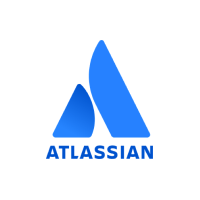How to Leverage Jira Align – Agile Scaled for the Enterprise
As organizations grow, the potential benefits of scaling Aagile increase across the board. However, the challenges standing in the way of effective scaling grow and change as well. The most common of these challenges fall into three main buckets:
- Lack of alignment – Various levels of the organization are disjointed and are therefore unable to move forward efficiently toward established goals, or unable to effectively communicate what those goals are.
- Lack of predictability – With numerous teams working simultaneously without effective alignment, releases become more and more complex and unwieldy and KPIs are routinely compromised.
- Lack of governance – Metrics, reporting, and monitoring are poorly controlled and slow in affecting action, so agility is sacrificed in favor of bureaucracy.
There’s a point at which an organization is too large and complex to effectively stay agile without an overarching management platform that takes a top-down approach to monitoring and managing widespread development teams.
That’s where Jira Align comes in.
What is Jira Align?
Atlassian Jira Align is a solution built from the top down to effectively fill the “complexity gap” even large enterprises end up facing as they try to scale Agile. It’s been rated as an industry leader in Gartner’s Magic Quadrant for Enterprise Agile Planning Tools, and for good reason.
Built to align organizations around common goals and objectives, Jira Align provides an overarching platform that starts at the very top—with business goals and strategies—and carries those guidelines down all the way to the individual team level, offering visibility and context to every stakeholder along the way.
With Jira Align, everyone in the project lifecycle can see what’s happening in real time. The solution integrates seamlessly with the tools you’re already using—like Jira Software, Jira Service Management, and more—to keep everyone apprised of current and future status. And, that “golden thread of data” becomes more visible and useful to everyone. With over 250 reports built in and custom reporting capabilities, real time and historic monitoring becomes part of the fabric of the agile organization.
What features make Jira Align stand out?
The purpose of the solution is to provide visibility and monitoring capability into every level of the organization so that development activities can be handled with agility.
Some of the key features that make this possible include Rooms, in which stakeholders at various levels of the organization can access the full store of reporting and monitoring, geared toward their individual roles, all in one place.
The Integrations also create powerful efficiencies by breaking down barriers between disparate teams who may be using different applications. For larger enterprise organizations who are seeking unification following a merger or acquisition, this can be an especially valuable tool to get everyone on the same page quickly.
Value streams help managers monitor ongoing work without micromanaging or slowing down progress. This keeps development teams and release trains running “on schedule” while ensuring they’re working in line with strategic business goals.
As already noted, Jira Align reports are centralized to ensure that every stakeholder receives any and all data they need, quickly, accurately, and consistently. As opposed to ad hoc spreadsheets prepared differently by every division manager, one centralized database provides coherent reporting to every level of the organization.
In addition to these core features, Jira Align allows for unification in terminology, consistency in controls, and a clear, fundamental understanding that extends organization wide. As a result, it supports visibility, predictability, and velocity across all development and business teams.
Who is Jira Align for?
As already noted, Jira Align is especially beneficial for larger organizations in which the “complexity gap” has started to create problems. It also works very well for highly regulated industries that need a more thorough level of real time monitoring and granular reporting at every level of the organization.
Small to medium-sized businesses—even those that have matured to the portfolio level of their agile journey—can often accomplish what they need using Jira Software. They may not need all that Jira Align has to offer.
Large companies and enterprise organizations that want to experience the benefits of scaling agile effectively from the top down are really the “sweet spot” customers that can get the most out of Jira Align. These companies are often trying to integrate 4-5 levels of agile scaling and may even be running multiple instances of Jira already, so alignment has become a real challenge.
Within those optimal organizations, aspects of the Jira Align platform will appeal well to program managers (or RTEs), product managers, portfolio managers, and C-suite executives alike. All stakeholders can benefit from a centralized management platform and reporting database that covers the agile development process from every angle.
With metrics and scorecards that provide transparency into what the teams are actually working on, Jira Align will save a considerable amount of time and have it all in one solution. Jira Align provides real-time visibility into:
- Portfolio Value to Spend
- Budget vs Estimate vs Actual
- Strategic Governance
- Resource Management
- Metrics and Scorecards
- Project Funding and Status
- And much more…
Jira Align pricing
As a true enterprise solution, Jira Align does carry a higher price tag than other flavors of Jira. The price is dependent on a number of factors, including number of users, add-ons selected, and the level of technical support your organization wishes to invest in.
It’s also important to note that Jira Align pricing is arranged to allow four integrated users for every “seat” you pay for. So, you can divide your development organization by four to determine how many seats you’ll need to purchase annually.





